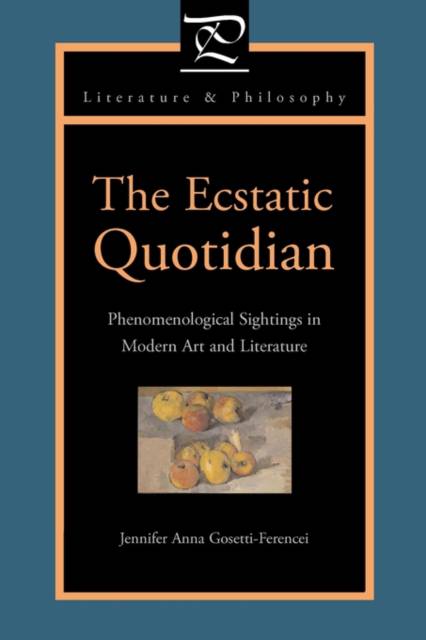
- Afhalen na 1 uur in een winkel met voorraad
- Gratis thuislevering in België vanaf € 30
- Ruim aanbod met 7 miljoen producten
- Afhalen na 1 uur in een winkel met voorraad
- Gratis thuislevering in België vanaf € 30
- Ruim aanbod met 7 miljoen producten
The Ecstatic Quotidian
Phenomenological Sightings in Modern Art and Literature
Jennifer Anna Gosetti-FerenceiOmschrijving
Fascination with quotidian experience in modern art, literature, and philosophy promotes ecstatic forms of reflection on the very structure of the everyday world. Gosetti-Ferencei examines the ways in which modern art and literature enable a study of how we experience quotidian life. She shows that modernism, while exhibiting many strands of development, can be understood by investigating how its attentions to perception and expectation, to the common quality of things, or to childhood play gives way to experiences of ecstasis--the stepping outside of the ordinary familiarity of the world.
While phenomenology grounds this study (through Husserl, Heidegger, Merleau-Ponty, and Bachelard), what makes this book more than a treatise on phenomenological aesthetics is the way in which modernity itself is examined in its relation to the quotidian. Through the works of artists and writers such as Benjamin, Cézanne, Frost, Klee, Newman, Pollock, Ponge, Proust, Rilke, Robbe-Grillet, Rothko, Sartre, and Twombly, the world of quotidian life can be seen to harbor a latent ecstasis. The breakdown of the quotidian through and after modernism then becomes an urgent question for understanding art and literature in its capacity to further human experience, and it points to the limits of phenomenological explications of the everyday.
Specificaties
Betrokkenen
- Auteur(s):
- Uitgeverij:
Inhoud
- Aantal bladzijden:
- 280
- Taal:
- Engels
- Reeks:
Eigenschappen
- Productcode (EAN):
- 9780271032283
- Verschijningsdatum:
- 15/05/2010
- Uitvoering:
- Paperback
- Formaat:
- Trade paperback (VS)
- Afmetingen:
- 152 mm x 229 mm
- Gewicht:
- 412 g

Alleen bij Standaard Boekhandel
Beoordelingen
We publiceren alleen reviews die voldoen aan de voorwaarden voor reviews. Bekijk onze voorwaarden voor reviews.









